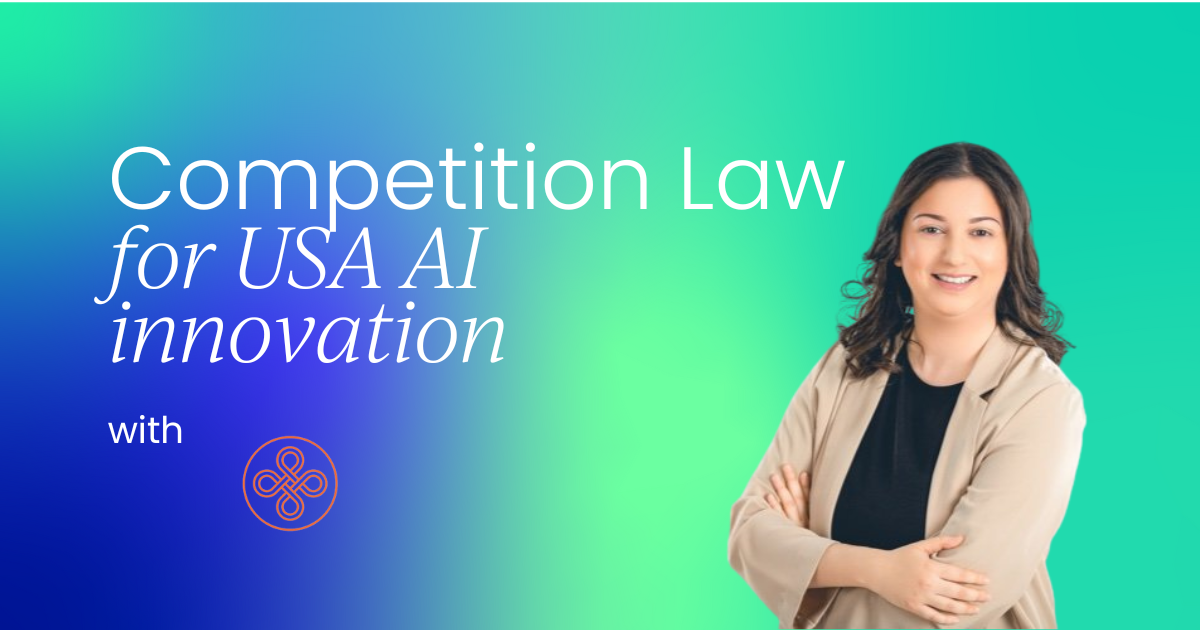Artificial Intelligence (AI) and the Law sit at a critical intersection as regulators seek to identify the most appropriate long-term solution to a technology bound by the pace problem.
The European Union (EU) Competitiveness Report published back in September 20241 highlights considerations the EU bloc should look at in their forthcoming budget to ensure that excessive regulation does not impede an Artificial Intelligence-driven future.
What is the EU Competitiveness Report?
The EU Competitiveness Report was published by Mario Draghi on 9 September 20241 outlining how stagnant economic growth and excessive red tape could threaten innovation, Europe’s prosperity, and social welfare.
Draghi’s report recommends sectoral and horizontal policies to ensure the bloc is competitive in the future alongside the United States and China. To achieve this, an injection of €750-800 billion1 from a mixture of public and private investment is recommended (or 5 percent of the EU’s total Gross Domestic Product (GDP)), with €450 billion1 allocated to the energy transition. In addition to the required investment, the report has additionally recommended reforms in Competition Law to allow for mergers of European corporations, especially on the back of the EU’s decision to block the merger between Siemens and Alstom back in 2019.2
How the recommendations in the report will be actioned in the long run will not solely be determined from Draghi’s presentation to the informal European Council but equally tested when President-elect Donald Trump is sworn into office on the 20th January 2025. Additionally, the negotiations on the upcoming multi-annual financial framework (MFF) that will shape the EU budget for the period 2028 - 2034 will be an additional hurdle in determining the actionability of the report, with a first draft expected in 2025. The foundational negotiations and, ultimately, the budget size and expenditure will determine if the report has laid the foundations for a more ambitious EU.

Technology innovation in Europe
With increasing global pressure to dominate the AI landscape whilst simultaneously working to improve understanding of AI ethics, there is a pressing need for increased investment along with Research and Development (R&D) to cope with the heightened computational demand AI is bringing: an area in which Europe is falling behind in.
Generally speaking, the EU’s industrial model is highly diversified when it comes to technology: it is more specialized in established technologies but weaker in both software and computer services. Taking R&D expenditure in Europe compared to the market leaders in software and internet, for example, EU firms represent only 7% compared to 71% for the US and 15% for China1. With technology, hardware, and equipment, again, the EU trails, accounting for only 12% of R&D expenditure compared to 40% in the US and 19% in China1.
Despite Europe lagging behind in R&D, the bloc, on a positive note, has a stronghold in high-performance computing (HPC). 2018 saw the launch of the Euro-HPC joint undertaking, where the creation of large public infrastructure across six member states allowed for an increase in computing capacity1. Additionally, with plans to launch two exascale computers in the future, these new systems, alongside the AI Innovation package3, will open up HPC capacity to AI startups, an important step in helping companies scale their AI systems.
Among the innovation agenda outlined above, core legislation surrounding the EU’s digital model is an important pillar to ensure fairness and contestability within the digital sector. The Digital Markets Act4, for example, sets out obligations gatekeepers - large digital platforms providing core platform services such as search engines - must follow. As Frontier AI continues to develop, there is bound to be increased resistance between the EU and US companies as they more deeply embed Artificial Intelligence into their software with the aim of marketing it to as many consumers as possible.
What does the roadmap say about AI?
According to the Competitiveness report, only 11% of EU companies are adopting AI (compared to a target of 75% by 2030)1, and when it comes to foundation models developed since 2017, 73% of these are from the US and 15% are from China1.
A reason why Europe lacks competitiveness in this space is that it doesn’t have the availability of venture capital and lacks cloud hyperscalers as the US does, for example, through partnerships such as OpenAI and Microsoft. This is additionally exacerbated by the availability of venture capital funding. In 2023, for example, only $8 billion in venture capital was made in the EU compared to $68 billion in the USA and $15 billion in China1, respectively. Combining this with the fact that Mistral and Aleph Alpha - two companies building Generative AI models - require significant investment to become competitive against the EU players, they have no choice but to opt for funding overseas.
Back in March 2024, the EU’s AI Act5 was passed: regulation involving the categorisation of AI systems regardless of context pigeonholed into differing risk levels. The Act’s effectiveness of enforcement and impact, however, is unlikely to be seen until 2026, when the transition period and provisions for high-risk systems come into effect. With AI embedded cross-platform, managing competition across the smaller and larger players will be a delicate balancing act, and with AI showing no signs of slowing down, the future of AI and its associated regulation will bring a combination of excitement and controversy.

What does it mean for AI and associated Law in the future?
Addressing the challenges around the availability of R&D funding will be one of numerous steps to ensuring the EU bloc is competitive in the AI space. However, with competition from the USA and China only going to strengthen, it will not only be funding that is required but a look at competition law reform.
High inflation environments could give rise to tacit collusion - a form of collusive behaviour as a result of firms coordinating their actions without explicitly reaching an agreement - a gap not easily filled, especially when there are no current (and good) EU-level tools to deal with the practice.
Furthermore, consumer inertia resulting from brand loyalty, switching costs, and habit formation may result in undisciplined competition due to consumers preference for a more cost-effective and technologically streamlined option. A competition enforcer wants to ensure consumers are not exploited, but at the same time, similar to tackling the high inflation aspect, there is no specific tool for them to use.
While the EU’s AI Act5 is a commendable step in managing what is a continually difficult technology to contend with, Europe lagging behind holistically in AI development may result in EU companies having their market share lessened by their non-EU counterparts. Competition benefitting EU consumers on many occasions comes from trade resulting in regional and global markets, so if competition reform is on the table to boost enterprise in the bloc, minimising anticompetitiveness and harm from illegal subsidies to foreign firms must be looked at closely.
Bibliography
1Mario Draghi, The future of European Competitiveness Part B: in-depth analysis and recommendations, The European Commission, 2024
2 Siemens/Alstom (Case IV/M.8677) Commission Decision 139/2004/EEC [2019] OJ C 300/07
3Joint Research Centre, Science for Policy brief, Harmonised Standards for the European AI Act, JRC 139430.
4Regulation (EU) 2022/1925 of the European Parliament and of the Council on contestable and fair markets in the digital sector [2022] OJ L265/1 (hereafter: DMA).
5European Commission. (2021). Proposal for a Regulation of the European Parliament and of the Council laying down harmonised rules on artificial intelligence (Artificial Intelligence Act) and amending certain Union legislative acts. COM/2021/206 final. Available at: https://eur-lex.europa.eu/legal-content/EN/TXT/?uri=CELEX:52021PC0206
Here at AI Accelerator Institute, we're always looking to bring you more exciting events each year.
And 2035 is no different; why not take a look at what we have planned for you?




 Follow us on LinkedIn
Follow us on LinkedIn





